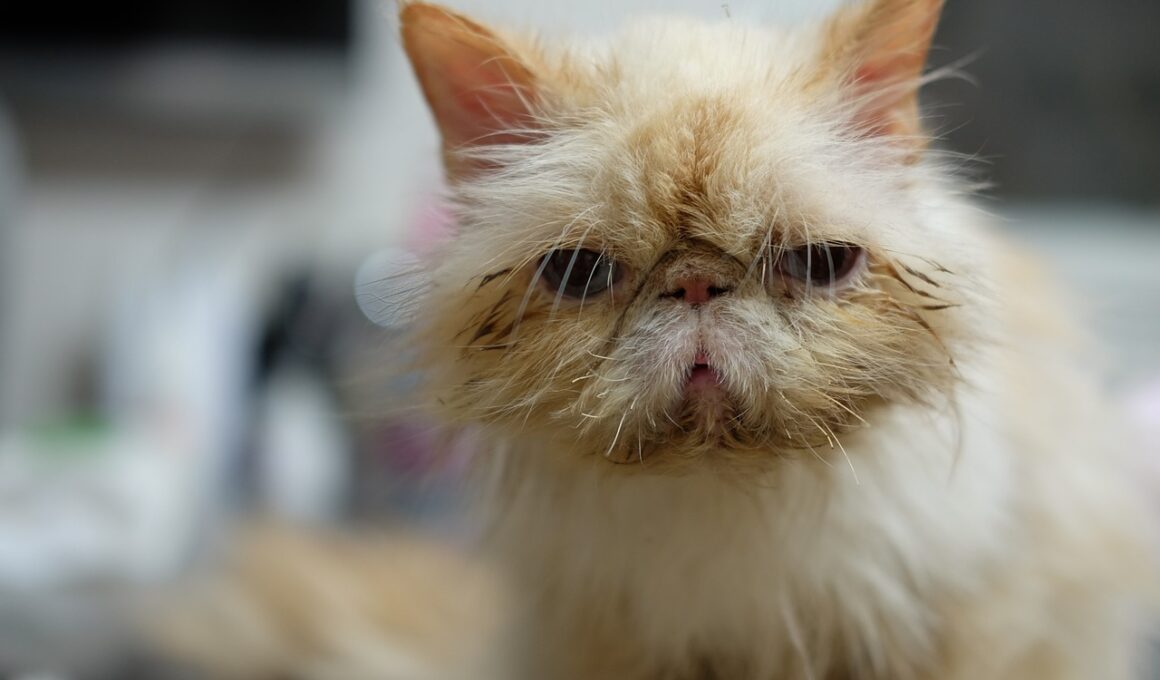How Veterinary Clinics Collaborate with Cat Insurance Providers
When it comes to veterinary care for cats, collaboration between veterinary clinics and cat insurance providers is essential. This partnership helps ensure that pet owners can afford the necessary medical treatments their cats require. By working together, these entities promote the idea that pet insurance is a vital resource. Many veterinary clinics now recommend specific insurance providers to their clients, making the process smoother for pet owners. These recommendations are based on the providers’ reputations, policy coverage, and ease of claims processing. As a result, clinics sometimes hold informational sessions to help educate pet owners about the importance of insurance. They partner with insurance representatives to share knowledge with clients. This approach sets a proactive standard in veterinary medicine, where understanding insurance becomes a part of pet ownership. Furthermore, such collaborations often lead to special discounts or benefits for clients who choose to insure their cats. Clinics may negotiate better rates or coverage options for their clients, creating a win-win situation. Overall, this partnership works to enhance the quality of care available for cats, ensuring that their health is prioritized without financial obstacles.
Veterinary clinics benefit from cat insurance partnerships in various ways. Establishing a collaborative relationship allows clinics to streamline the treatment process, making it easier for pet owners to obtain necessary treatments. This efficiency is crucial in emergency situations where time is of the essence. Having a pet insurance provider significantly reduces the financial stress associated with immediate care. Therefore, clinics can focus on providing the best medical services rather than worrying about cost. Insurance collaboration leads to improved client relationships, as clients feel more valued when their needs are understood. As clinics understand insurance policies better, they can tailor treatment plans considering what clients can afford. These clinics may even build referral programs. By referring clients to specific insurance providers, clinics can ensure that their patients get the best coverage options. In return, clinics may receive incentives or commissions from insurance companies. This financial arrangement can support clinics in maintaining their services. Moreover, through these partnerships, clinics may conduct joint marketing efforts that promote both the importance of pet insurance and the services provided by the clinic itself. In essence, collaboration enhances service delivery and client satisfaction.
The Importance of Education and Awareness
Education plays a vital role in the partnership between veterinary clinics and cat insurance companies. Many pet owners are unaware of the financial benefits of having insurance. Therefore, clinics have taken the initiative to educate their clients about the cost of unexpected veterinary visits. Informative pamphlets or direct consultations help demystify insurance processes. When clinics explain how insurance can alleviate financial burden, clients become more likely to invest in policies. Furthermore, increasing awareness of pet insurance can lead to more preventative care. Clients with insurance are more inclined to seek veterinary care earlier, thereby reducing the risk of severe health issues. Clinics actively promote responsible pet ownership by sharing success stories of insured pets. Highlighting cases where insurance significantly improved a cat’s health outcome strengthens the message. Collaborations might even extend to webinars or workshops focusing on the practical aspects of pet insurance, allowing attendees to engage with experts directly. This not only informs pet owners but fosters relationships within the community. Thus, the collaboration creates a knowledgeable base of clients who appreciate the combination of veterinary services and comprehensive insurance coverage for their beloved cats.
Moreover, through sharing resources, veterinary clinics and insurance providers can create a trustworthy atmosphere for cat owners. The mutual goal of improving feline health not only enhances the treatment provided but also focuses on preventive measures. This proactive mindset encourages pet owners to schedule regular check-ups rather than waiting for symptoms to escalate. Cat health insurance policies often encourage annual veterinary visits, which can lead to early identification of conditions. This collaboration emphasizes the essential role of regular check-ups in maintaining a cat’s health. Many clinics develop exclusive plans in partnership with insurance companies that cater to preventive care. These tailored plans support comprehensive cat care, ensuring that routine vaccinations and health screenings are covered. Clients appreciate the ability to budget for their pets’ health needs effectively when the costs are predictable. Additionally, clinics often use data from insurance providers to analyze trends in cat health issues. Understanding the common ailments can enhance overall care strategies, leading to improved clinical practices. Consequently, the partnership not only improves immediate health outcomes but also informs future practices for better feline welfare.
Personalizing Veterinary Care Through Collaboration
The collaboration between veterinary clinics and cat insurance providers extends beyond financial aspects; it also enhances the personalization of care. Every cat is unique, with distinct needs that require tailored veterinary approaches. With insurance data and analytics, veterinarians can gain insights into client needs. This allows them to recommend personalized care plans that consider both health necessities and financial factors. Clinics frequently use their partnerships to provide customized treatment options, ensuring that proposals are within the coverage limits of the client’s policy. This personalization fosters trust and encourages clients to remain engaged in their cats’ health journeys. Additionally, clinics may develop specific wellness plans in collaboration with insurance providers that cater to a cat’s age, health status, and lifestyle. These plans not only focus on treatment but also emphasize preventive care, nutrition, and behavior, ensuring a well-rounded approach to feline health. Clients appreciate having a choice in their pets’ health care decisions when insurance facilitates options. This enhanced service quality solidifies the partnership between clinics and insurance, benefiting pets, owners, and healthcare providers alike.
Furthermore, collaboration between veterinary clinics and insurance companies can lead to innovative approaches in feline healthcare. By combining resources, they can participate in joint research initiatives focused on improving the health and welfare of cats. For example, the analysis of claims data can provide invaluable insights into common health issues prevalent in certain breeds. This information can inform preventive protocols and better management practices. Veterinary professionals can access updated research findings supported by insurance companies, integrating the latest medical knowledge into their practices. Additionally, these partnerships may lead to funding for specific feline health campaigns. They can launch initiatives aimed at increasing awareness of certain diseases affecting cats, thereby promoting proactive care. Moreover, by working with universities and research institutions, clinics and insurers can contribute to significant health discoveries. Collaborative research can eventually shape treatment guidelines that improve the overall quality of care provided in veterinary practices. Sharing valuable findings with pet owners becomes crucial as it encourages their active participation in their cats’ health. Such partnerships not only enhance veterinary medicine but also ensure that feline health remains a priority across the industry.
Conclusion: The Future of Cat Insurance and Veterinary Partnerships
The future of cat insurance and veterinary partnerships looks promising as both sectors recognize the mutual benefits of collaboration. Continued innovation in healthcare and technology can lead to enhanced service delivery models that better address client needs. As awareness of pet insurance grows, more pet owners will consider these policies essential, thereby encouraging routine veterinary care for their cats. The ongoing partnership models can lead to a more seamless integration of healthcare services, providing a better array of coverage options for clients. Furthermore, the role of technology cannot be understated. Telemedicine and online consultation tools are likely to enhance clients’ access to veterinary services. Insurance providers can work closely with veterinary clinics to ensure that claims processing remains swift and efficient. Together, they can develop user-friendly apps that allow clients to manage their insurance policies while staying informed about their pets’ health. Whether through digital health records or telehealth consultations, the synergy between veterinary care and insurance promises to reshape how cat owners approach their pets’ health. Indeed, this collaboration can elevate the standard of care for our beloved feline companions.
This is another paragraph with exactly 190 words.


